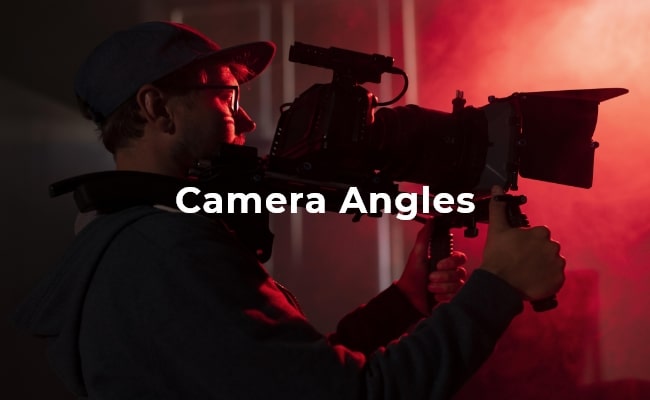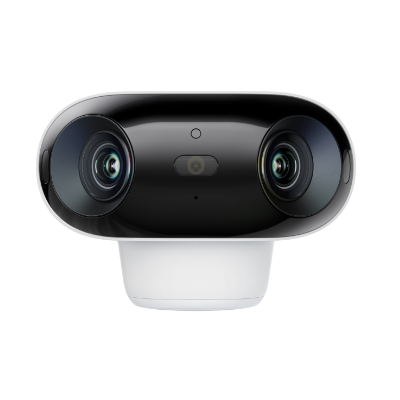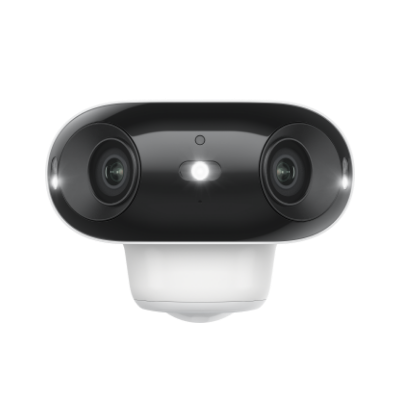Camera Angles Unleashed: Types & How to Use

Camera angles are very important in the art of filmmaking. They enable filmmakers to take pictures from varying points of view and arouse different feelings and reactions among the audience. This article will provide an extensive examination of camera angles commonly exhibited in movies, when they are required and some guidelines on how best to use them.
Overview of Camera Angles in Film
Camera angle can be defined as the place or level at which a camera is positioned while filming people, things, or places. Through these angles, one determines what is included within the frame, and how much of it fills up the screen. These allow for details to be seen clearly, give a particular feeling or create an impression about something, they also focus viewer’s attention.
The utilization of diverse camera angles has become a must-have storytelling tool in visual media such as films, TV shows and commercials. There are various reasons for making use of different shots with a view to show power relations between characters or setting specific moods or even following storylines over time.
Types of Camera Angles
There are several different camera angles used in filmmaking. The most popular different types of camera angles include the following:
Eye Level Shot
The eye level shot captures the subject straight on, with the camera placed at the eye level of the subject. This standard angle gives the viewer the impression of being an equal observer on the scene. Eye level shots help audiences relate directly to characters by removing any sense of superiority or inferiority suggested by high or low angles.
Low Angle Shot
A low angle shot positions the camera below the eye line of the subject, shooting upwards. This angle makes the subject look more powerful, threatening, or triumphant. Low angles are often used to portray villains or suggest someone is dominating a situation.
High Angle Shot
The high angle shot places the camera above the subject shooting downwards. It makes subjects appear small, weak, helpless, or powerless. High angles reduce the power of characters and evoke vulnerability.

Hip Level Shot
In a hip level shot, the camera is placed around hip level of the subject. This angle gives the impression of being in the action with the characters, creating an intimate effect. Hip level shots often follow moving subjects and engage the viewer.
Knee Level Shot
The knee level shot positions the camera around knee level of the subject. Because it is so close to the ground, this angle can make subjects appear even smaller or more vulnerable than high angle shots. Knee level shots are often used for children or animals.
Dutch Angle Shot
Instead of being straight horizontal or vertical, in the Dutch angle shot the camera tilts to one side creating an oblique angle. Dutch angles give the viewer a sense that the world portrayed is out of balance or askew. They create an unsettling mood and disoriented feeling.
When to Use Different Camera Shots and Angles
Choosing the right camera angles is crucial for conveying the desired tone and emotions. Here are some examples of using distinct camera angles to achieve specific effects:
- Low angle shots are perfect for making characters seem powerful, threatening or domineering, like villains or corrupt leaders. A low angle can also portray moments of triumph, success or achievement to emphasize the subject’s strength.
- High angles work very well to undermine characters and make them appear weak, helpless, desperate or vulnerable in situations where they lack power. High angles reduce confidence.
- Dutch angles visually communicate underlying chaos, tension, madness, horror or disorientation. They convey that the world portrayed is morally or physically unbalanced.
- An eye level shot connects audiences directly with characters by putting them on equal footing. This fosters empathy and understanding between viewers and subjects.
- Knee and hip level shots pull audiences into intense action and movement, creating engaging effects. These angles work well for sports events, chases, or children’s perspectives.
How to Implement Effective Angles in Filmmaking
When deciding where to place the camera, keep these tips in mind:
Coverage Area and Field of View
- Choose angles that capture all the desired action and visual elements in the frame. Ensure the field of view includes everything necessary to convey the scene, such as characters’ expressions and movements.
- Use a combination of long shots and close-ups from different angles rather than just one angle. This provides more coverage and flexibility when editing.
- Follow the 180-degree rule - cameras should stay on one side of the scene’s action to avoid disorienting cuts between angles.
Height and Elevation
- Adjust the camera height based on the desired impression. Higher angles diminish characters while lower angles enhance their power and dominance.
- Raise the camera on a crane or ladder for powerful high angle shots looking down on subjects. Get low with the camera for equally impactful low angle shots looking upwards.
- Keep the camera at eye level for standard shots. Change elevation for high/low angle effects to suit the scene’s tone as needed.
Avoid Obstruction and Glare
- Ensure the camera has an unimpeded view of the subject. Objects in the foreground can obstruct important action and details.
- Glare from the sun directly into the lens flares the image. Use a lens hood, move the camera, or adjust lighting to avoid glare.
Wide-Angle Security Camera Recommendation -Reolink Argus 4 Pro
The Argus 4 Pro is a dual-lens 4K battery-powered security camera that ensures a genuine 4K 180° field of view, providing comprehensive coverage and reducing the blind spots. With its dual-lens design, it captures a wider area without sacrificing image quality, making it perfect for monitoring large spaces.
4k 180° Wire-free Color Night Vision Camera
4K UHD 180° Blindspot-free View; Color Vision Day and Night; 30% More Battery Life; Dual-band Wi-Fi 6; Smart detection.
For customers who need full-color night vision without visible spotlights, the Reolink Argus 4 Pro is the ideal alternative. Alternatively, if you want an affordable option that nonetheless provides good performance, the Argus 4 standard version is worth considering.
4k 180° Blindspot-free Wi-Fi 6 Camera
4K UHD 180° Blindspot-free View; Dual-band Wi-Fi 6; Smart detection; Easy Installation Anywhere
FAQs
What are the 9 camera angles?
The 9 most common camera angles in filmmaking are eye level, low angle, high angle, establishing shot, bird’s eye view, worm’s eye view, aerial shot, point of view shot, and canted frame shot.
What are the 5 basic most common camera shots?
The 5 essential camera shots to know include wide shot, medium shot, close-up shot, over the shoulder shot, and point of view shot.
What is the most popular camera angle?
The eye level shot is generally the most commonly used camera angle since it places audiences at equal footing with characters on screen, allowing them to connect directly. Eye level shots help build empathy and understanding between viewers and the subjects portrayed.
Conclusion
Camera angle choice has a significant influence on the audience’s impressions of power dynamics, emotions, and orientation between the viewer and subjects on screen. Mastering various camera placement techniques provides extensive creative possibilities for visual storytelling.
Keep in mind how you want audiences to perceive the characters and scenes when deciding between high angles diminishing subjects, low angles enhancing them, standard eye level connections, or Dutch angles indicating chaos. With some practice, camera angles can become powerful tools for directing focus and interpreting the many nuances of filmed stories.
Search
Be in the Know
Security insights & offers right into your inbox


